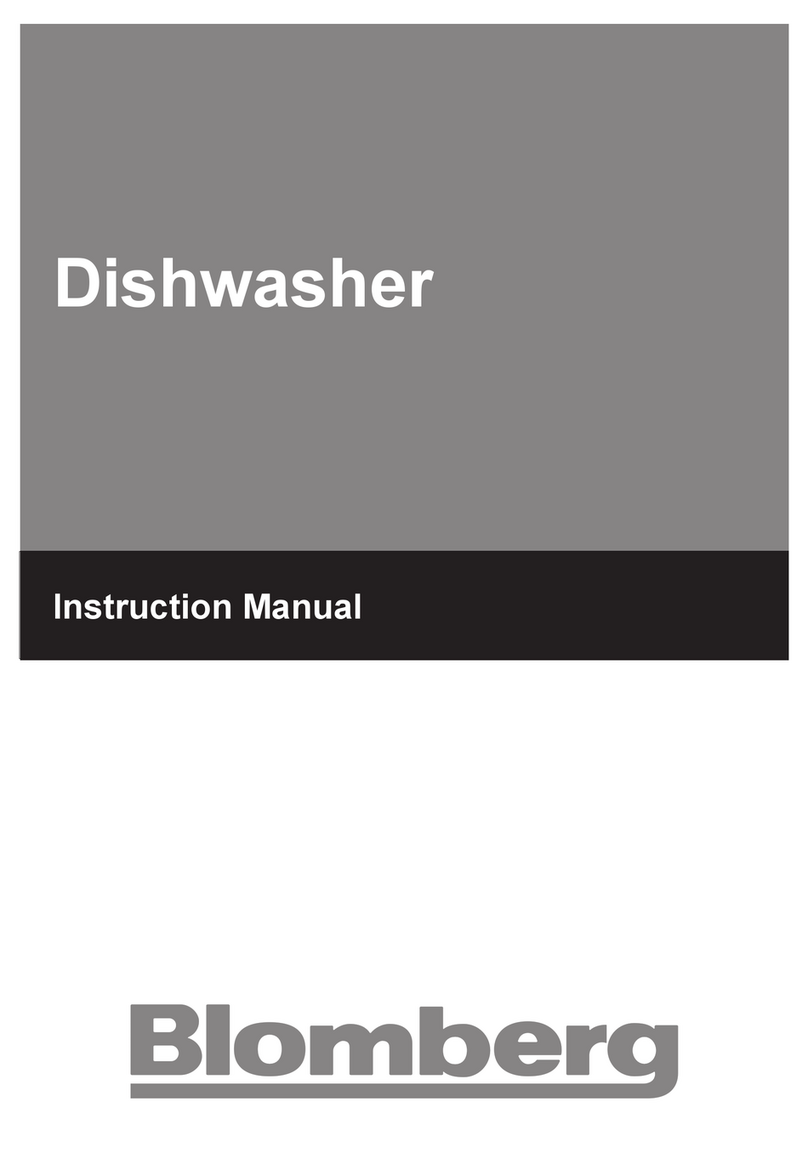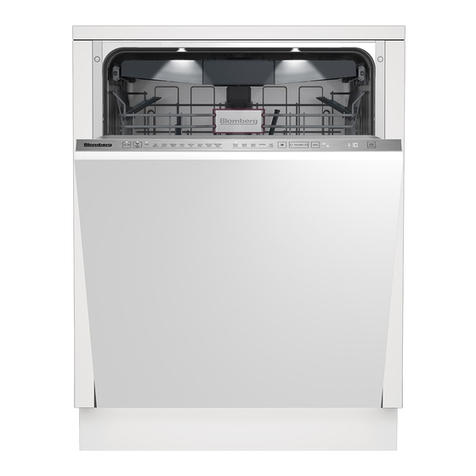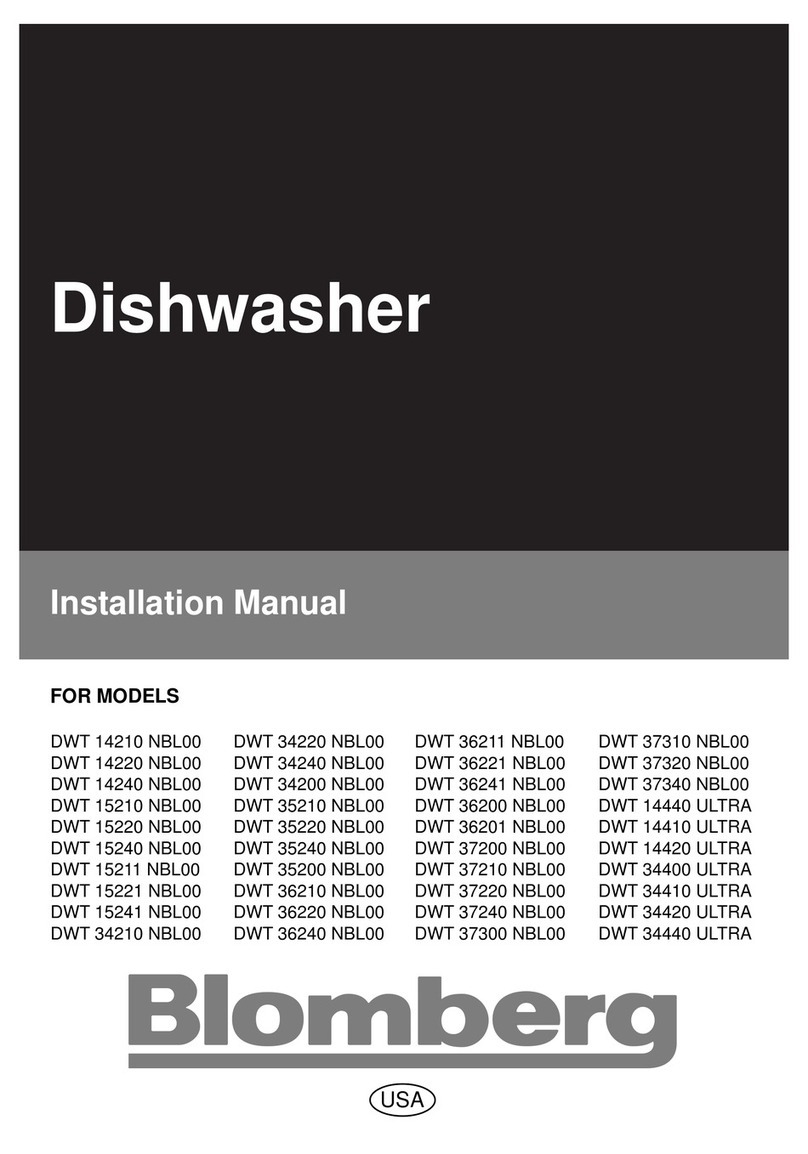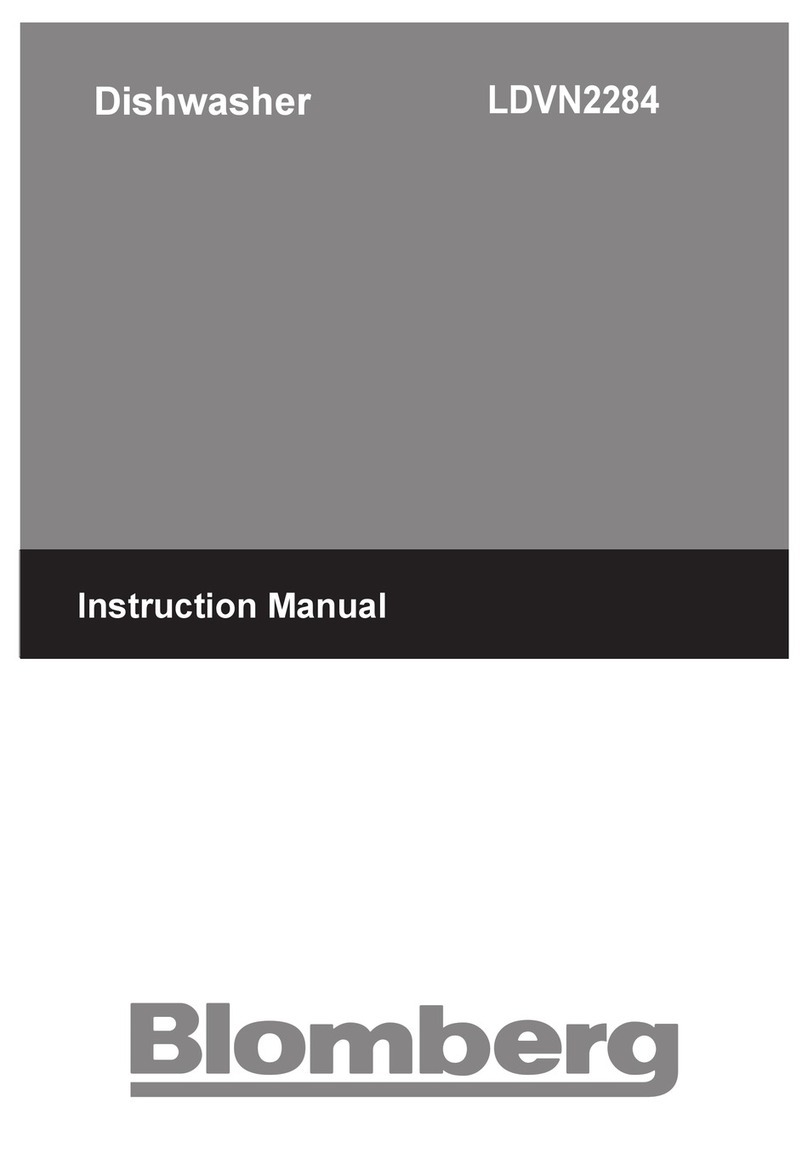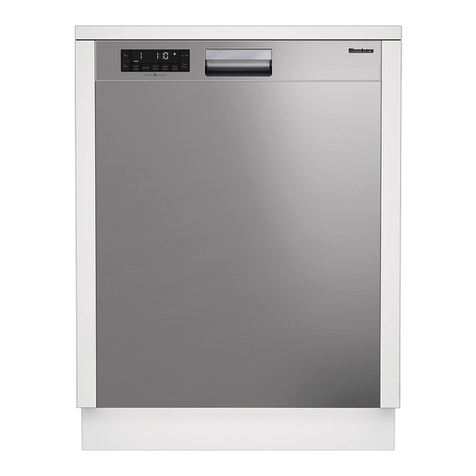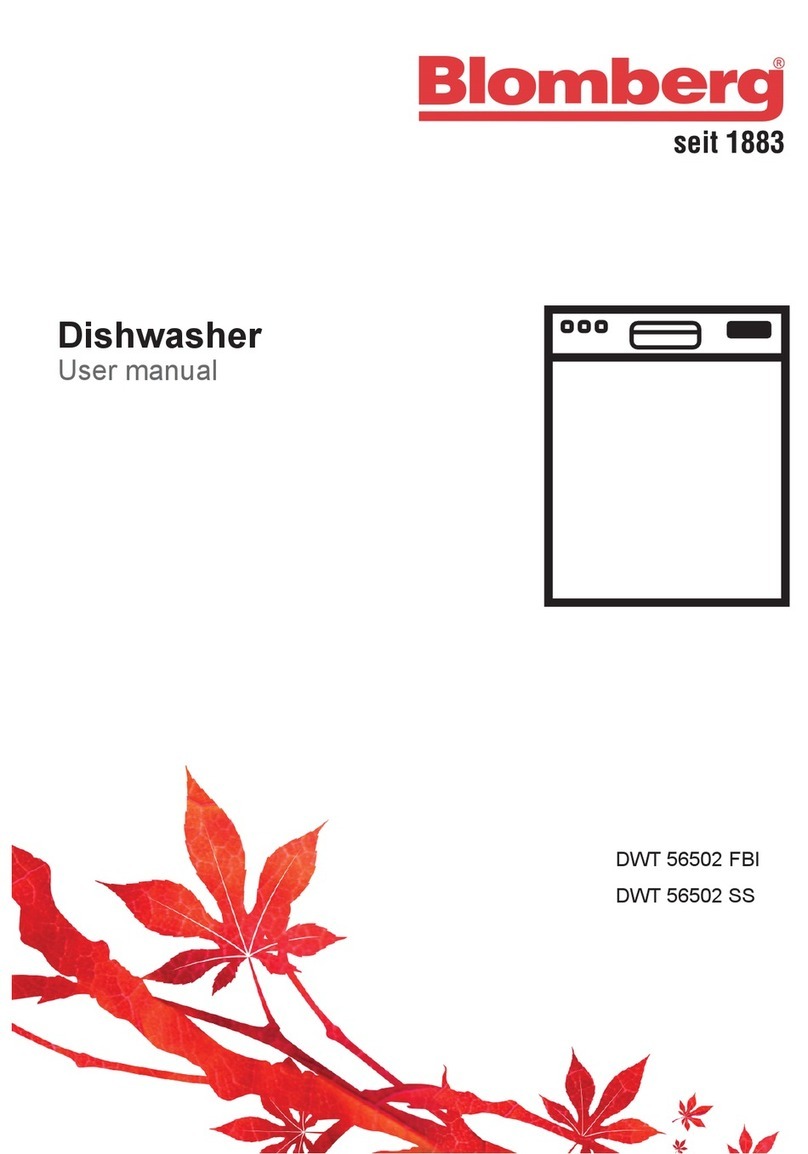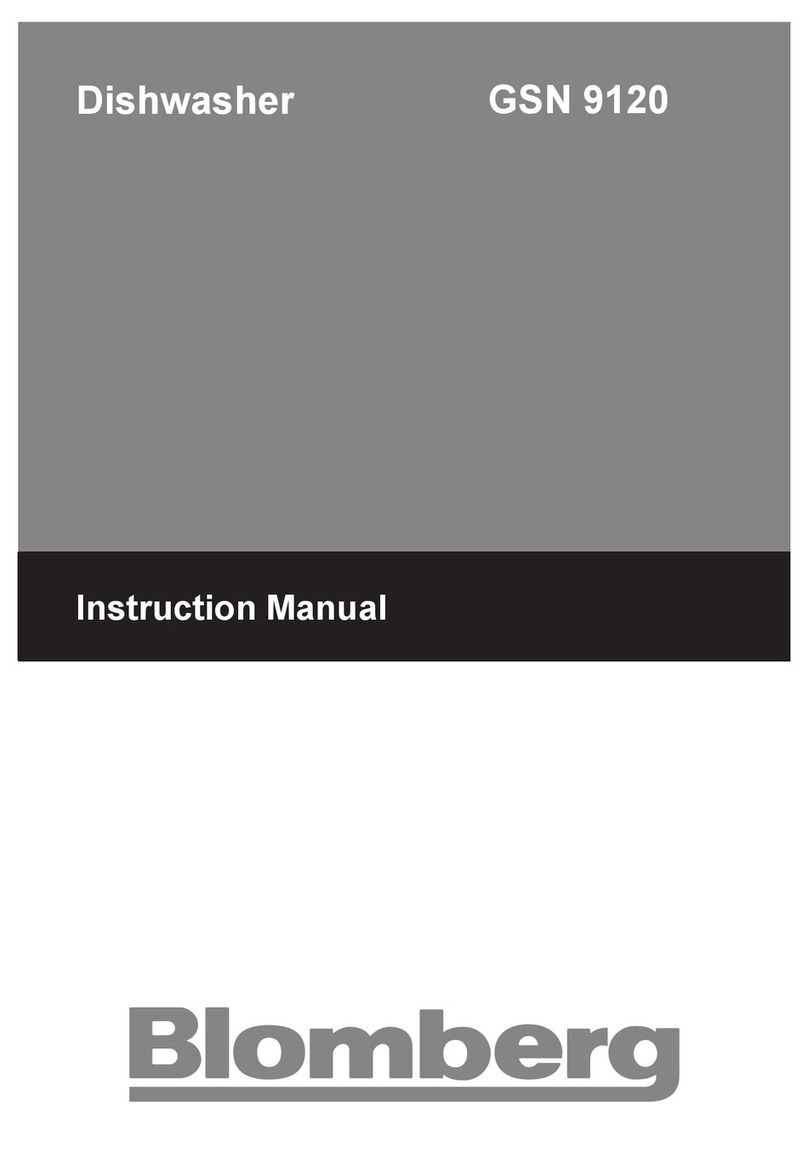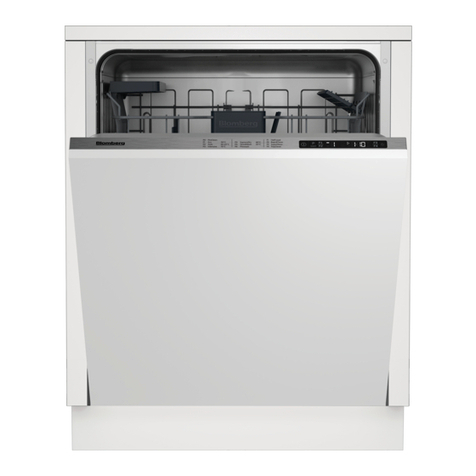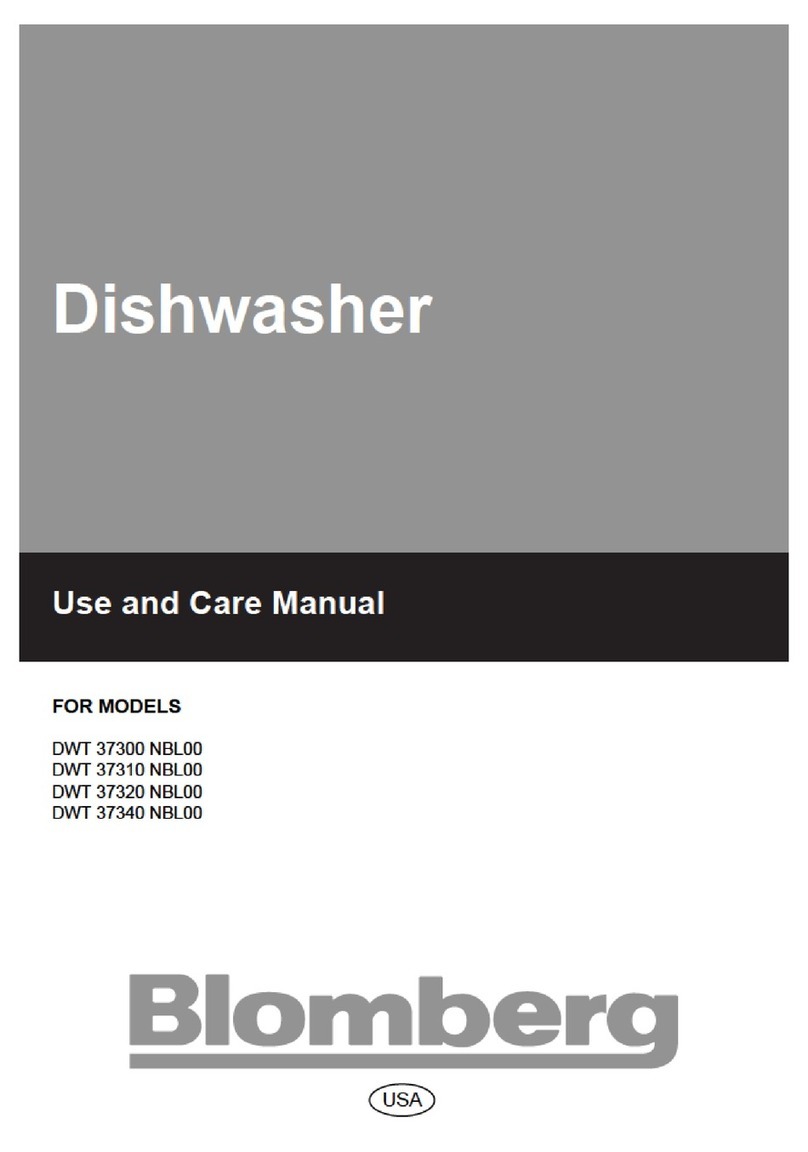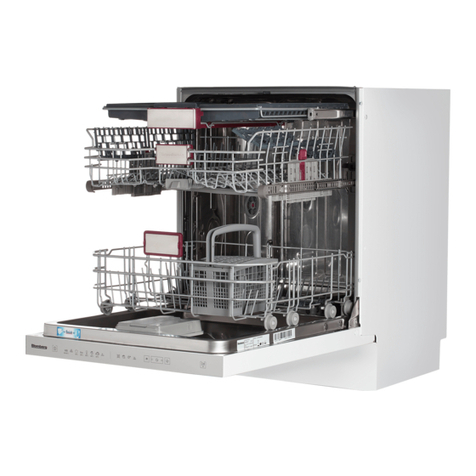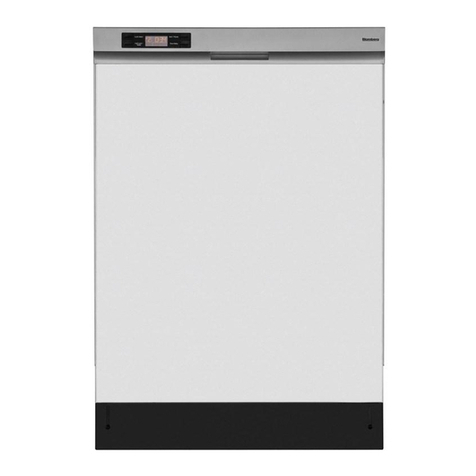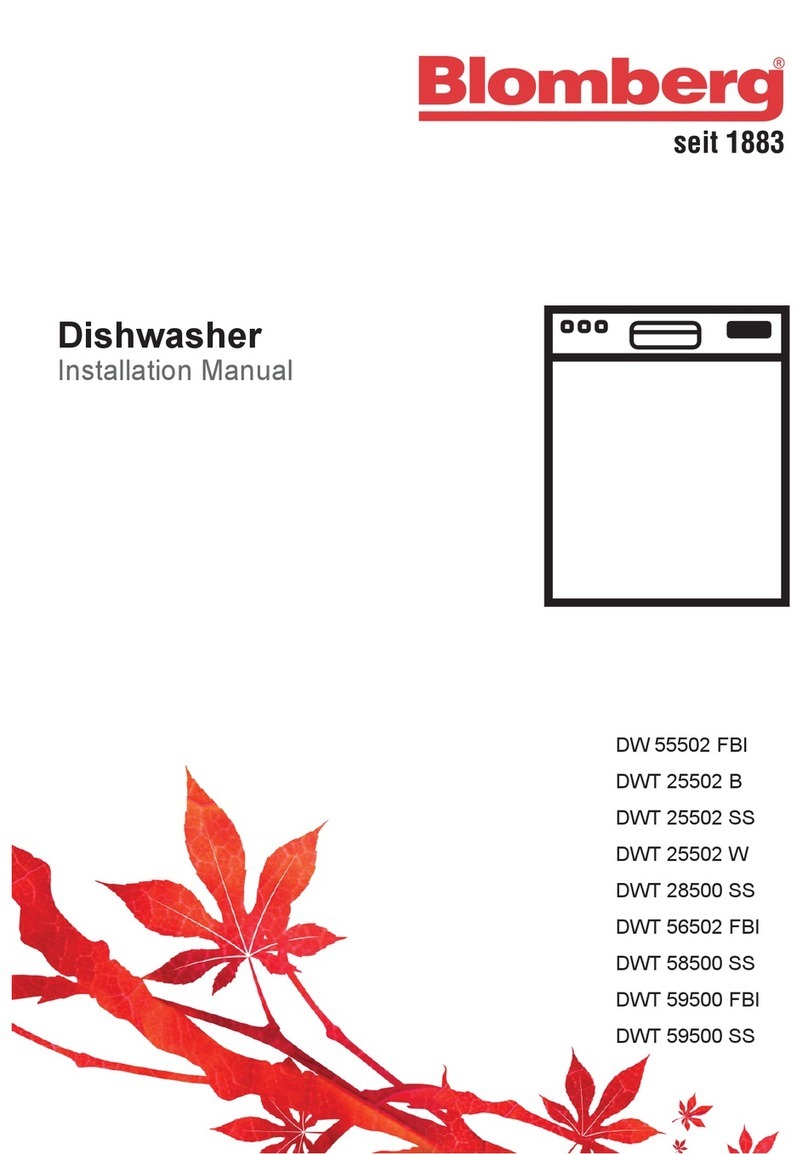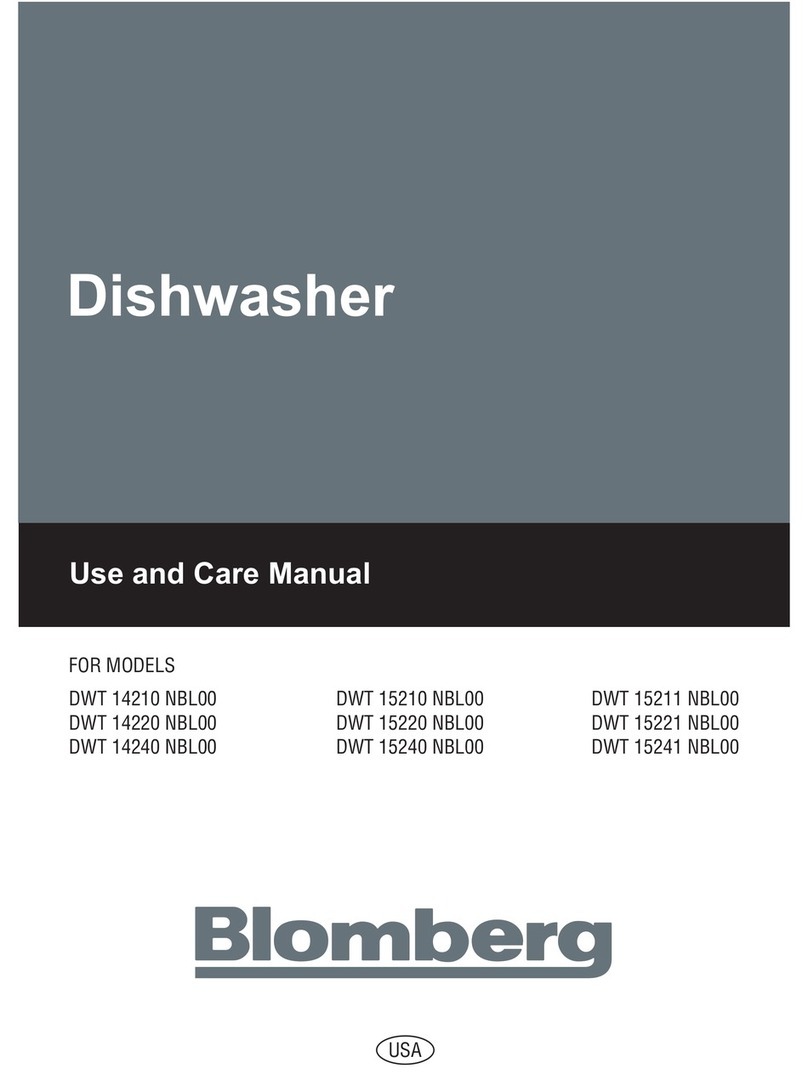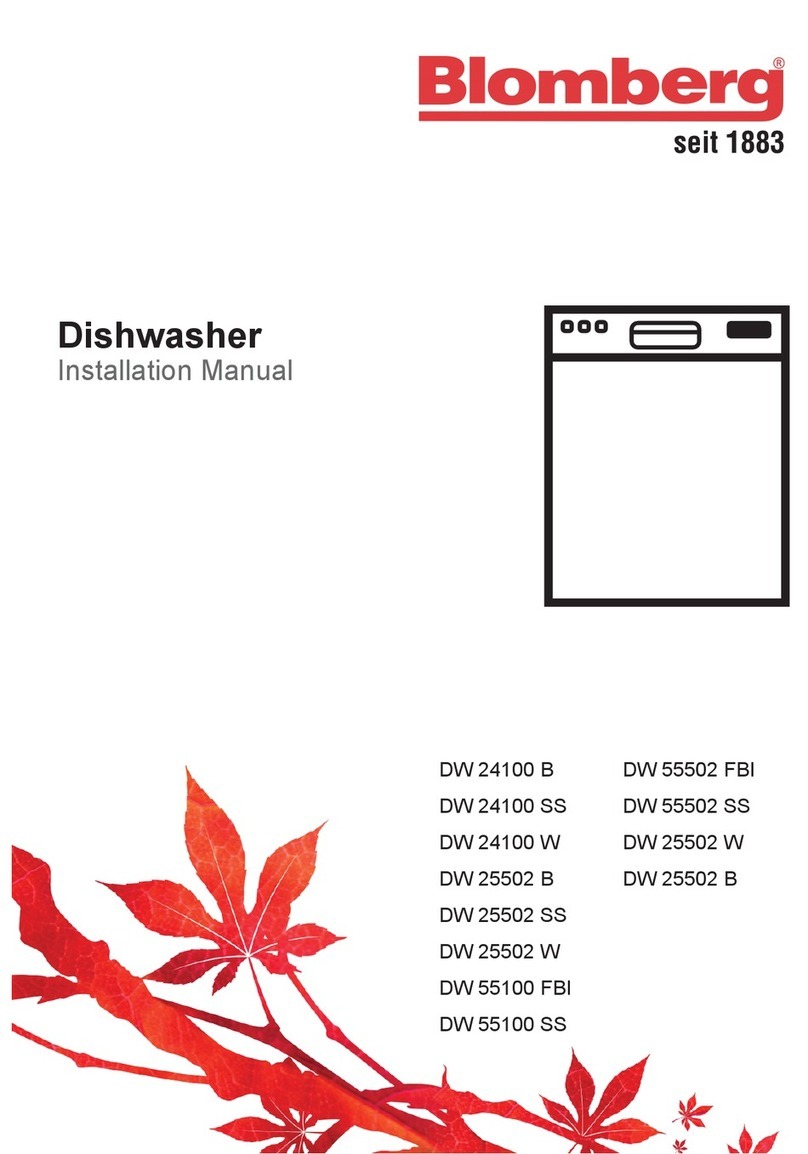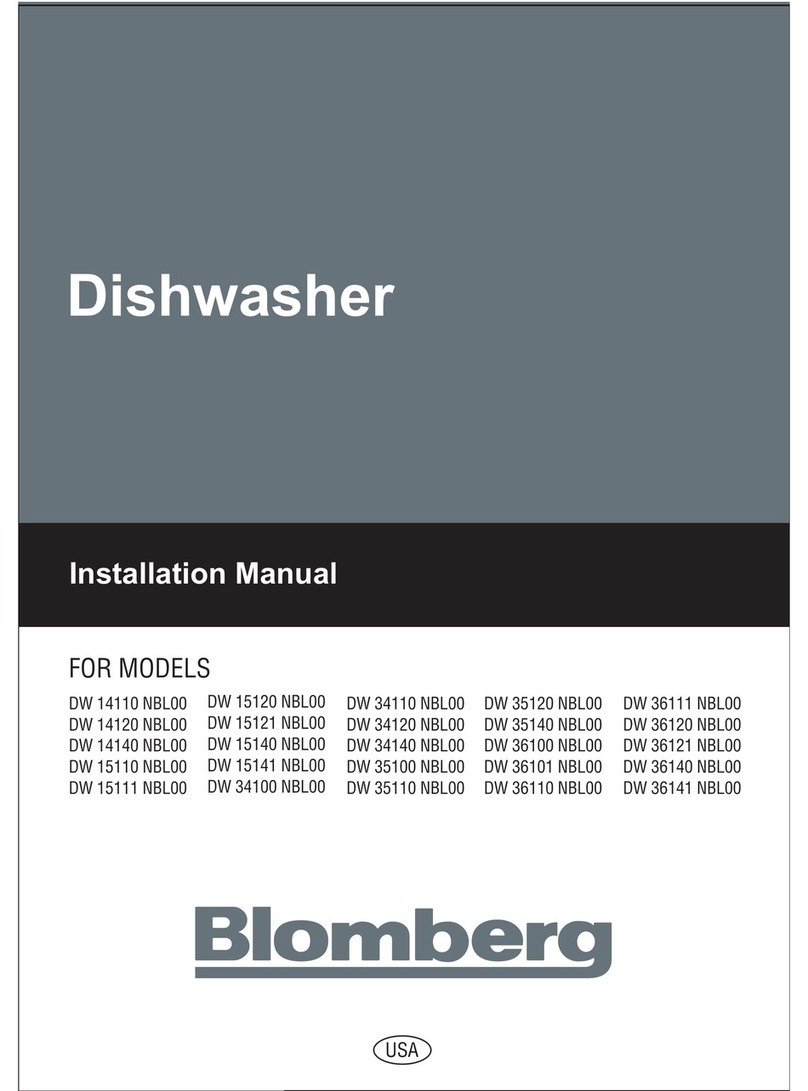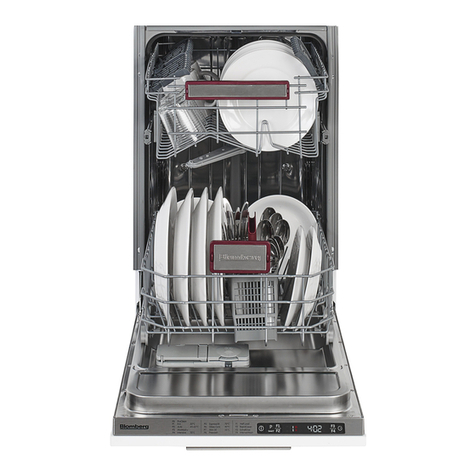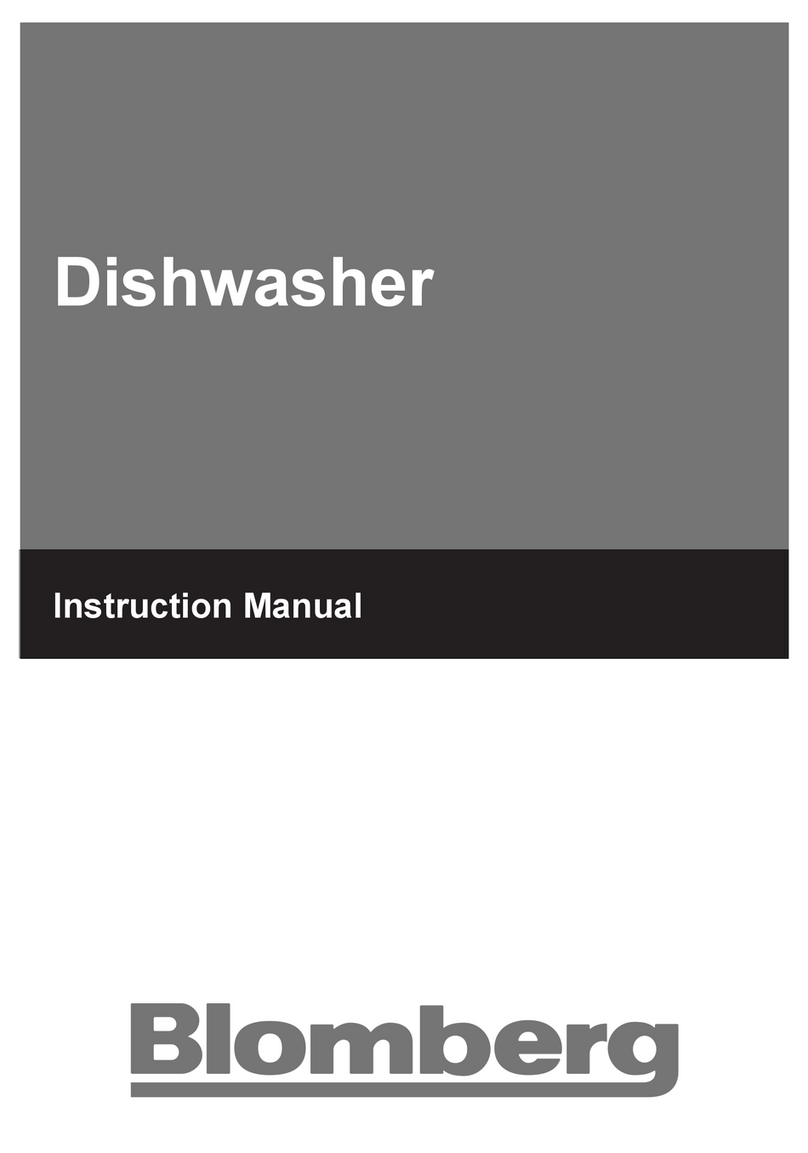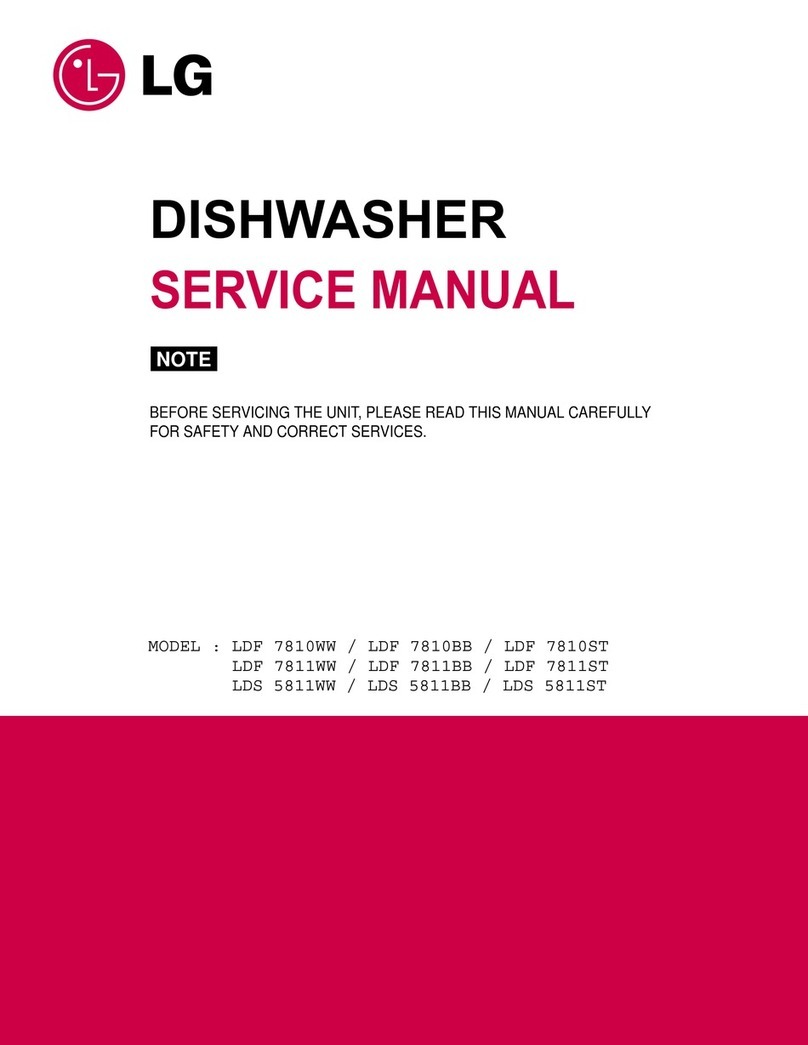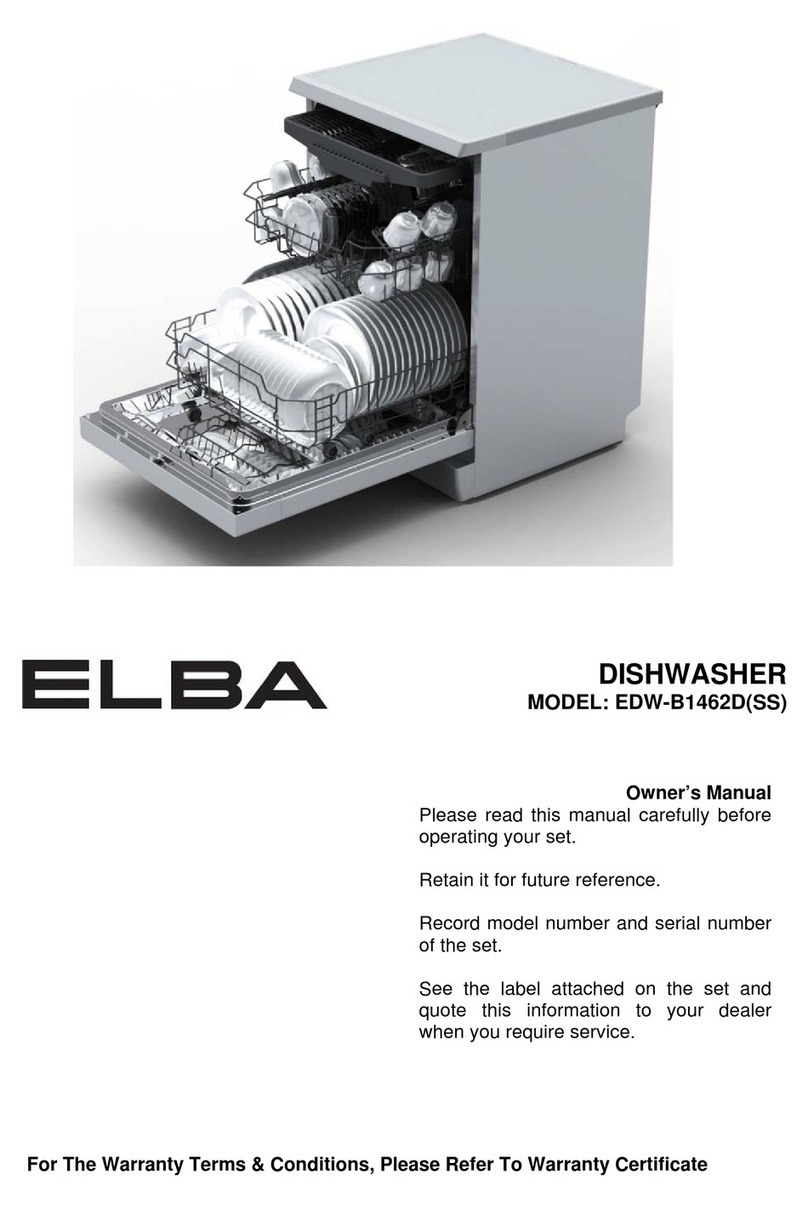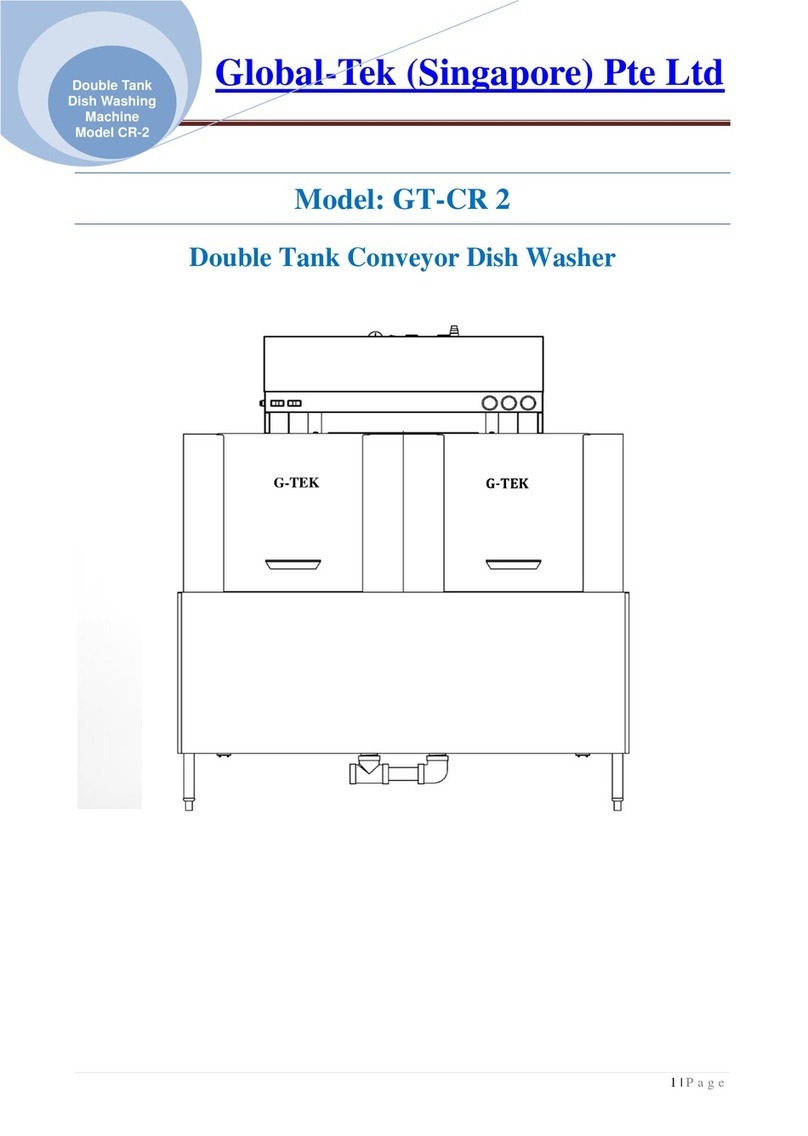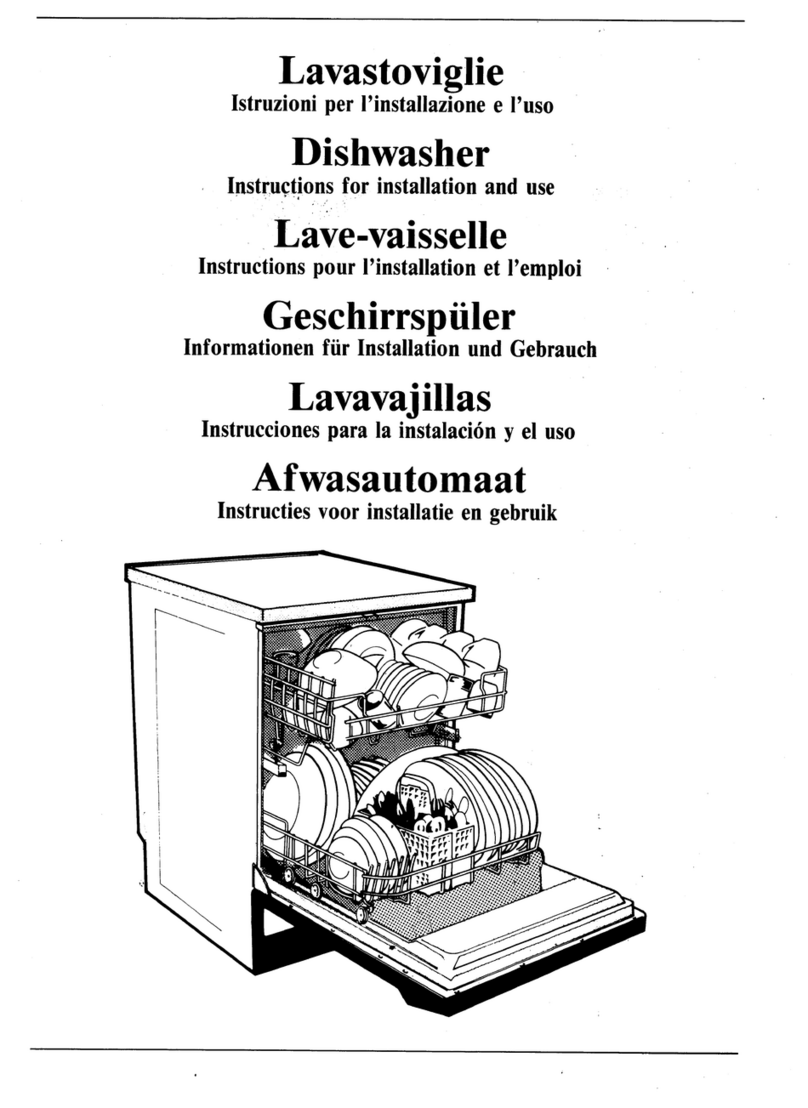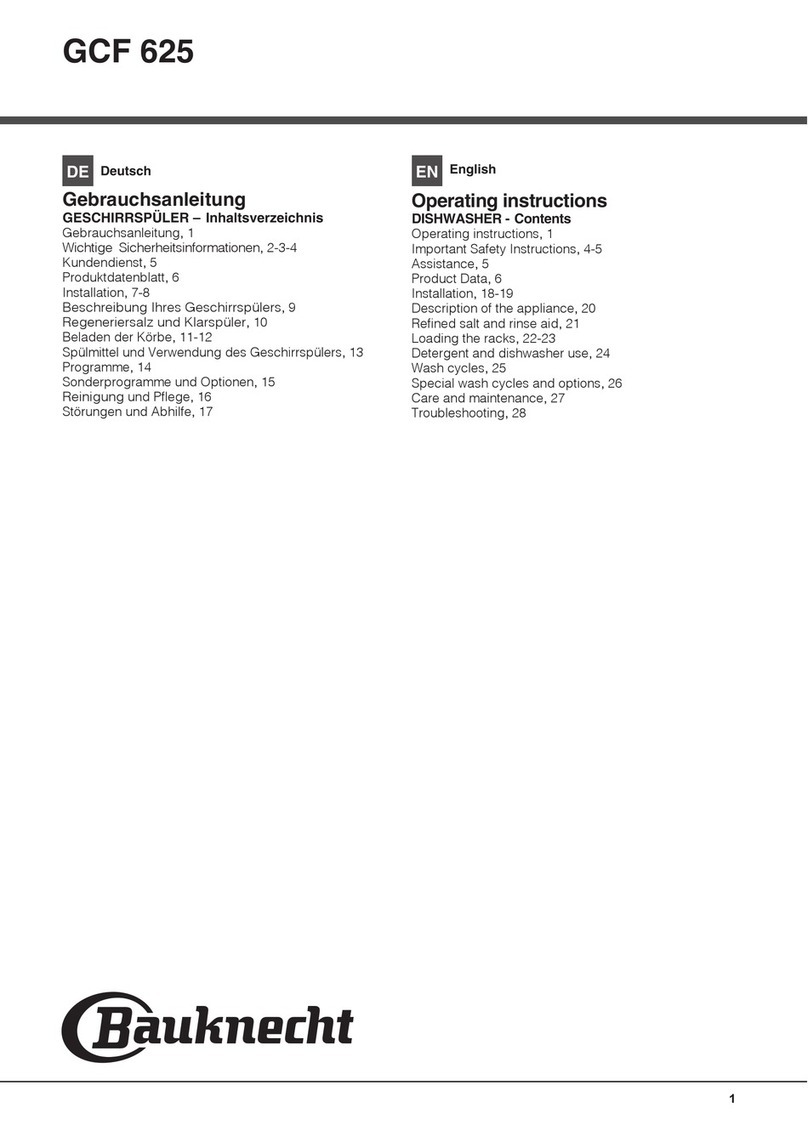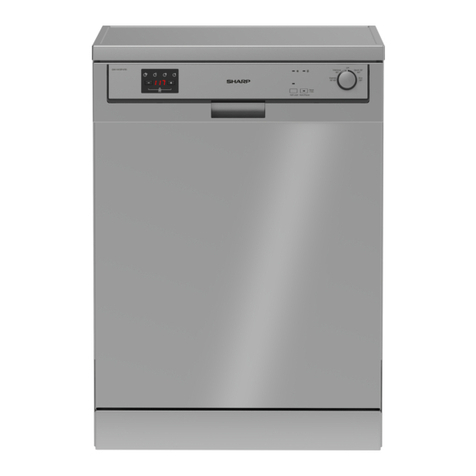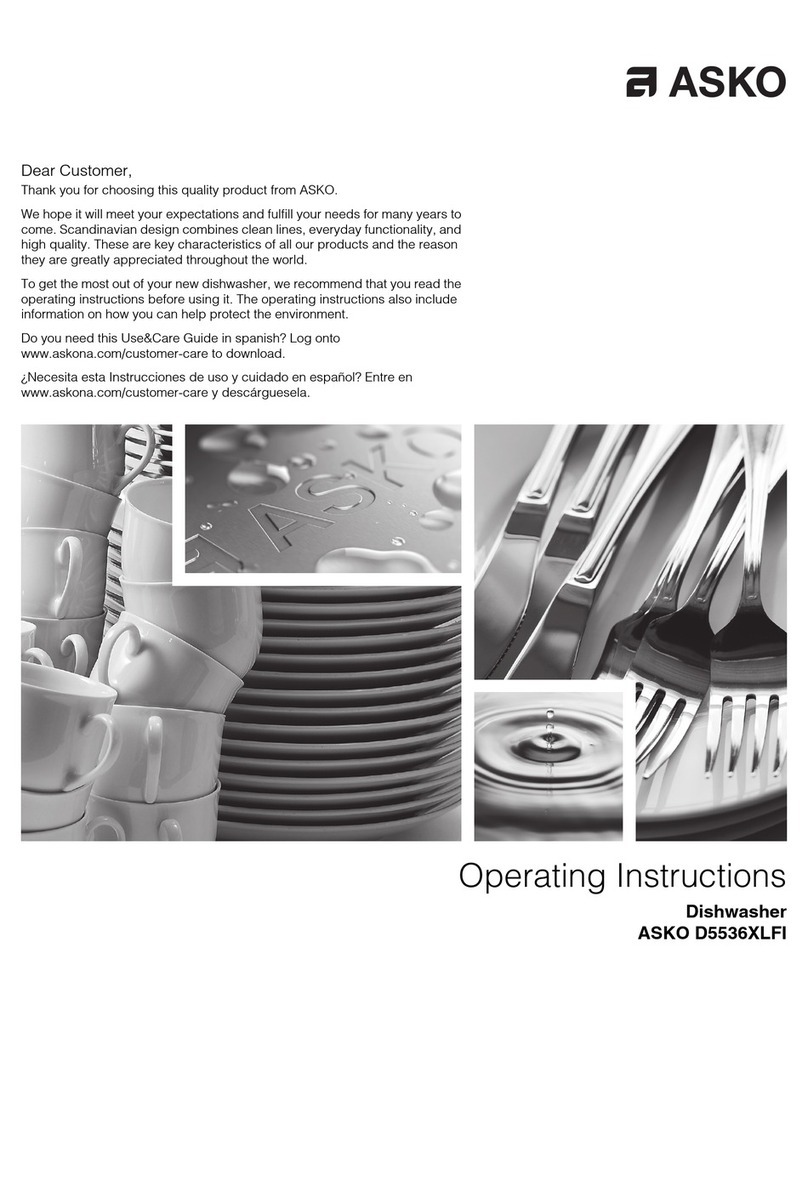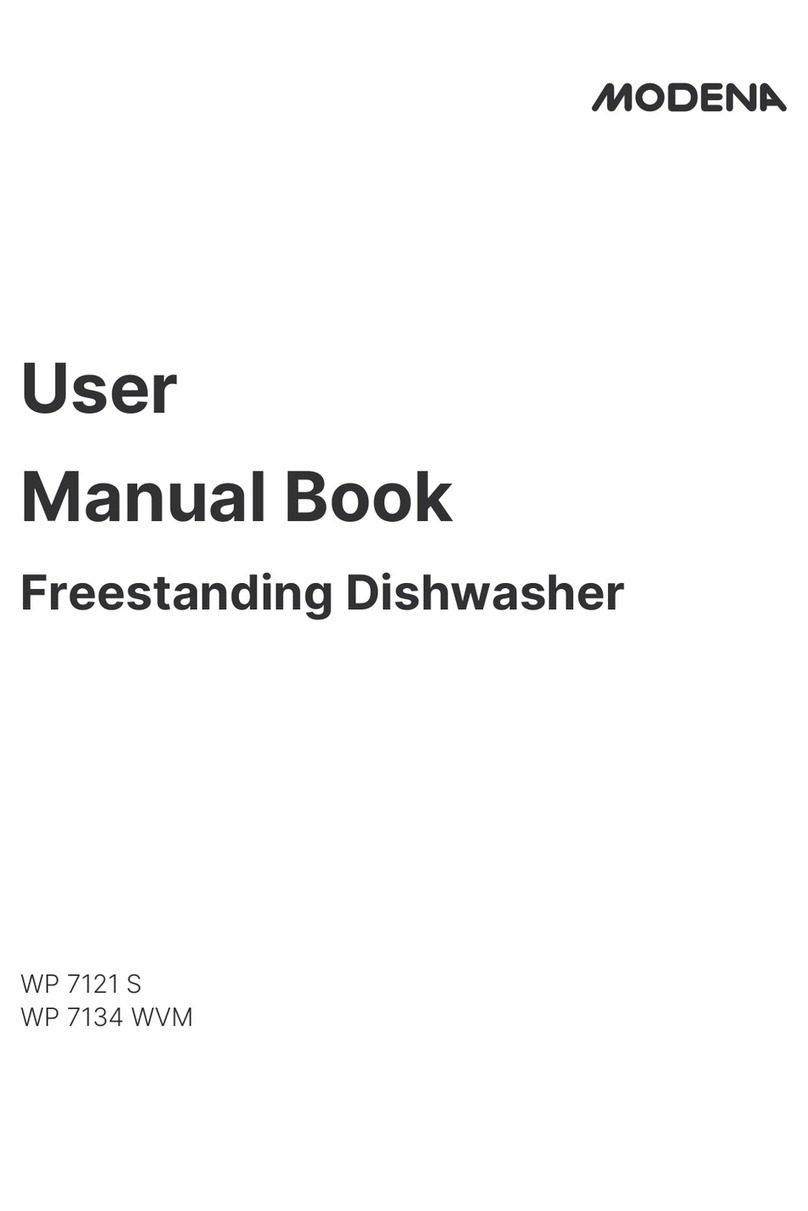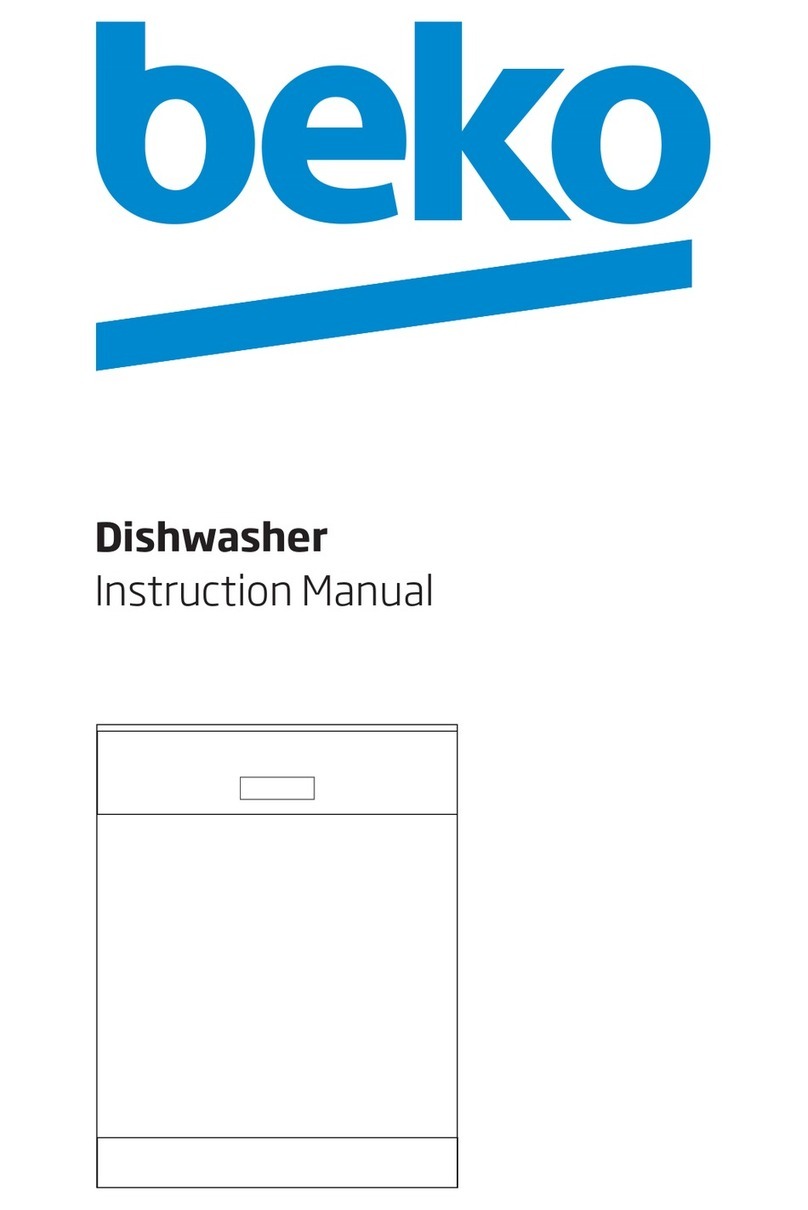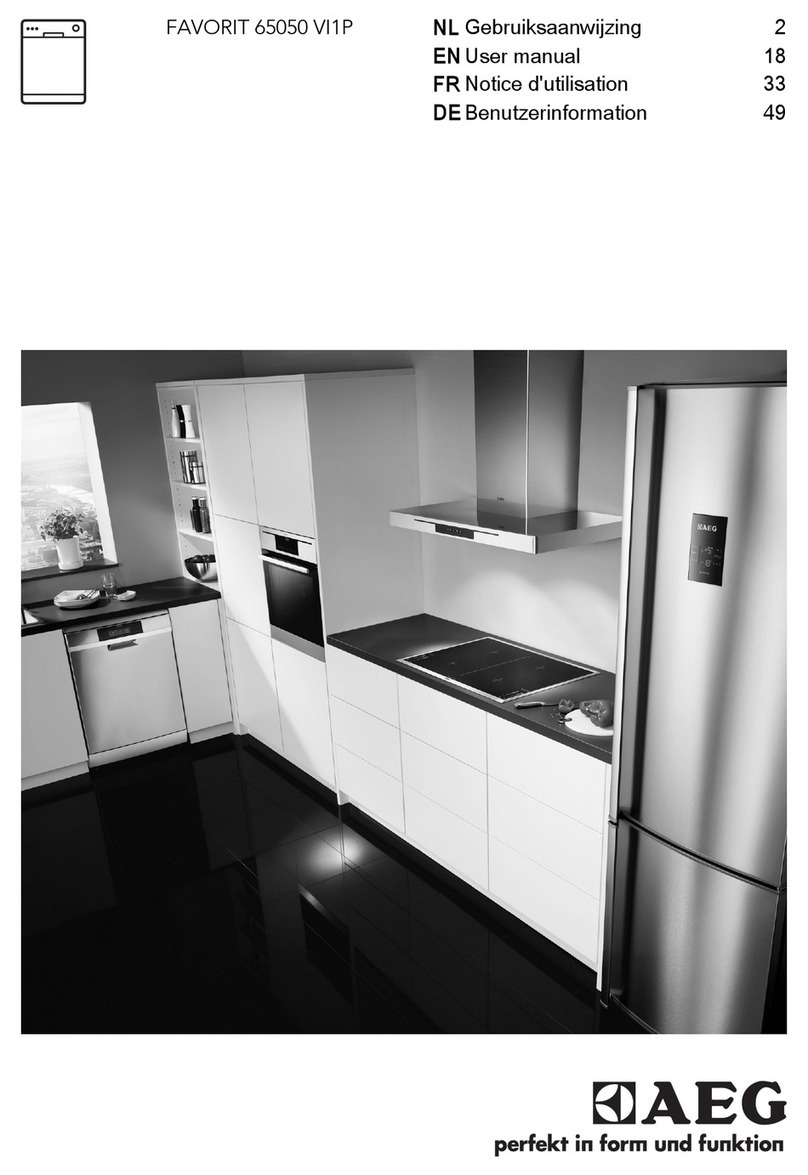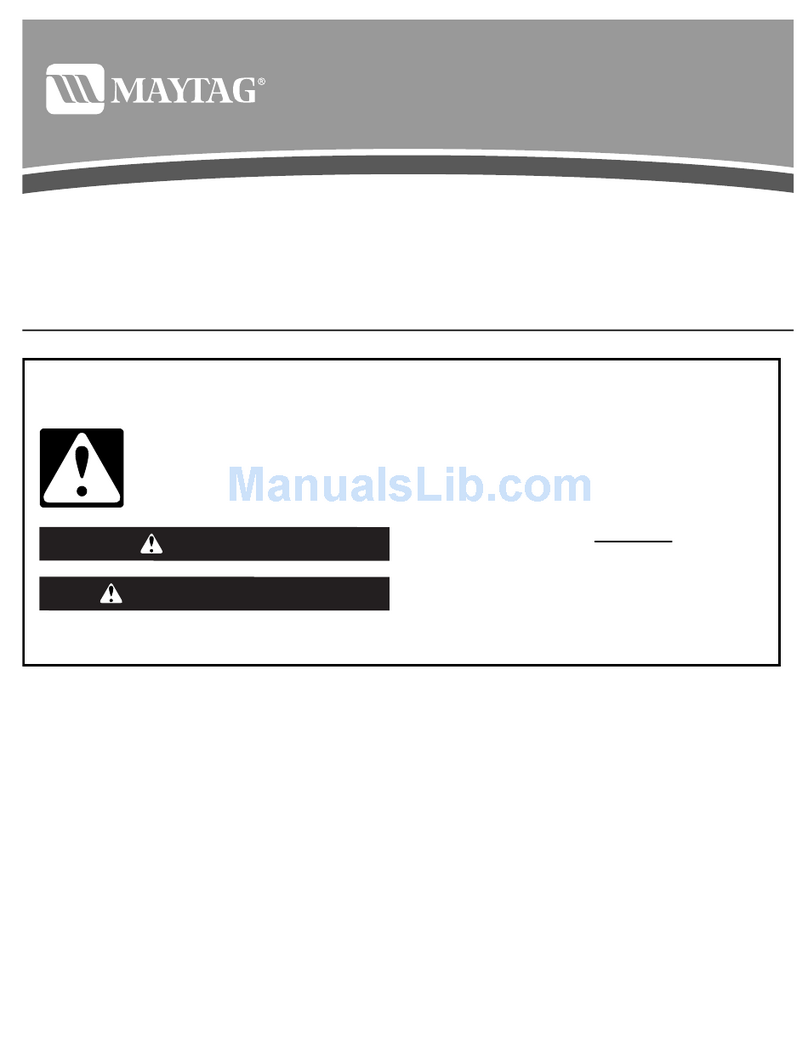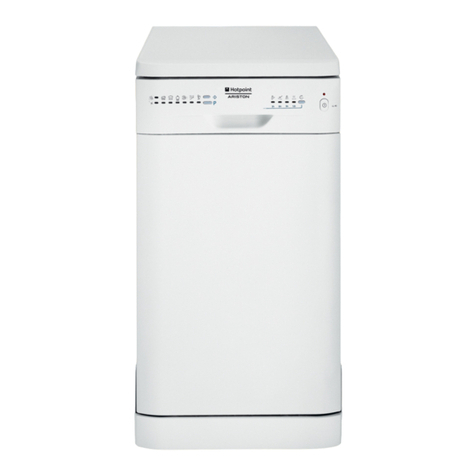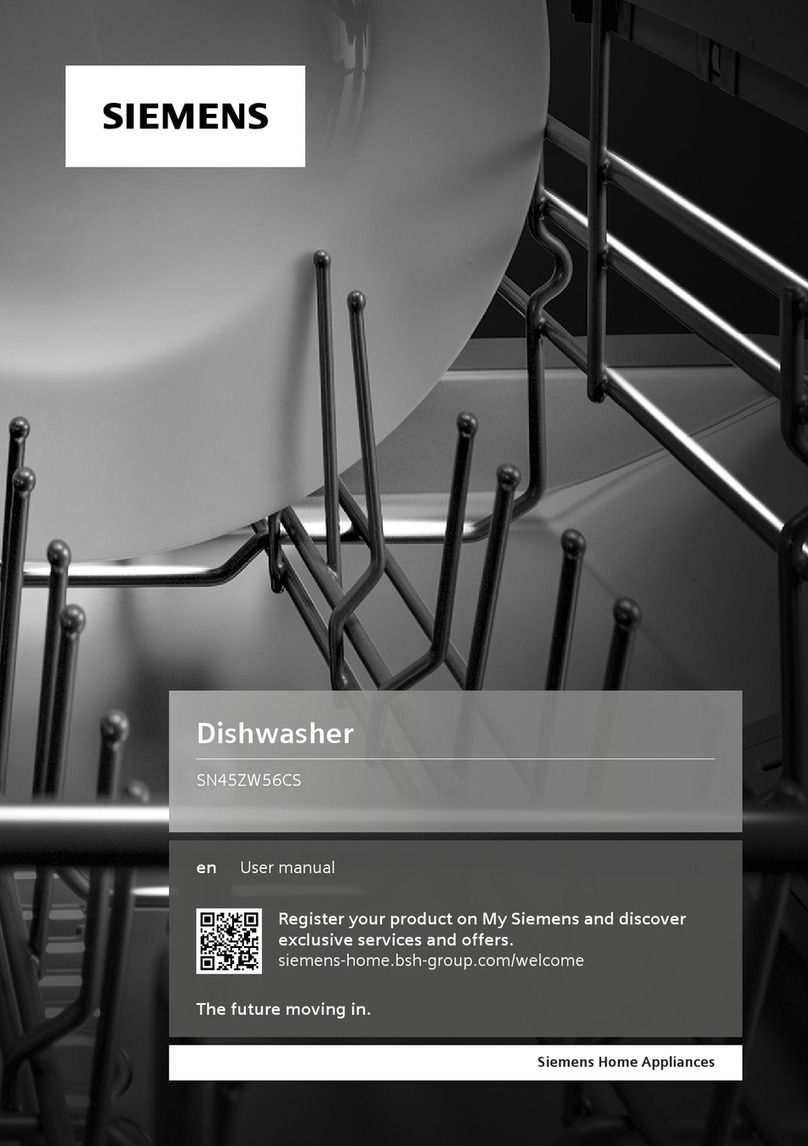9
Detergents
There are 3 types of detergents:
1. Phosphate and containing chlorine
2. Phosphate containing, no chlorine
3. Neither containing phosphate nor chlorine
The new compact powders are normally phosphate free. As phosphates have water softening
properties, we suggest you add salt to the salt container even if the hardness of your water
is only 6°dH. In hard water areas, if a phosphate free detergent is used, white marks on the
dishes and glasses may be observed. It may be prevented by increasing the amount of
detergent. Detergents without chlorine have less bleaching effect. Coloured stains may not
be fully removed. Choose a programme with a higher wash temperature.
Attention
Always store your detergents in locations which are cool, dry and out of the reach of children.
Pour the detergent into the detergent dispenser before turning the machine on.
Too much detergent may mean that the detergent does not dissolve properly and dishes are
scratched.
TWO-IN-ONE AND THREE-IN-ONE DETERGENTS
You will obtain the best results from your dishwasher if you use a separate detergent, rinse
aid and water-softening salt.
Detergent manufacturers also produce combined detergents known as two-in-one and three-
in-one.
Three-in-one: These products contain detergent, rinse aid and water-softening salt.
Two-in-one: These products contain detergent and either rinse aid or water-softening salt.
In general, you will obtain satisfactory results from combined detergents only under specific
usage conditions. These detergents contain predetermined amounts of rinse aid and/or softening
salt. This means that you cannot adjust the amount of water-softening salt and rinse aid that
you use to suit the water hardness level in your home.
You should bear the following points in mind when using such detergents:
- Be sure to check the specifications of the product you are using and whether it is a combined
product or not.
- Follow the instructions on the packet when using these products.
- The use of these products at the correct appliance settings will ensure econo ical
use of salt and/or rinse aid.
- If the detergent is in tablet form, never place these in the internal section or cutlery basket
of the dishwasher. Always place the tablets in the detergent dispenser of the detergent holder.
Using three-in-one detergent: detergent, softening salt and rinse aid
- These detergents will not give you the same drying performance that you can obtain by using
separate detergent, salt and rinse aid. To increase the drying performance:
Put your appliances rinse aid setting at 1 and apply rinse aid. hen the rinse aid is used
up, add more rinse aid to the rinse aid dispenser.
- If you use combined detergents with a rinse aid setting higher than 1, contact with the hands
may leave rainbow-coloured water stains on the washed items and inside the machine.
- If you use combined detergents without adding salt, lime scale may form especially on
glasses. To avoid lime scale formation:
Put your appliances water softener setting at 1 and add salt. hen the salt is used up,
add more salt to the water softener.
Using two-in-one detergent: detergent and softening salt
- These detergents do not contain rinse aid so you need to use the rinse aid setting as
described in the manual, making sure that there is rinse aid in the rinse aid dispenser with
every wash and that you refill the rinse aid dispenser with rinse aid every time it is empty.
Using two-in-one detergent: detergent and rinse aid
- These detergents will not give you the same drying performance that you can obtain by
using separate detergent, salt and rinse aid. To increase the drying performance:
10
Rust sensitive steel parts:
Cutlery with wooden or horn handles
Cutlery with mother of pearl or porcelain handles
Non heat resistant plastic parts
No glued dish or cutlery parts
No items made out of copper, tin or aluminium
Sensitive decorative glasses and porcelain parts
Lead crystal glasses
Art and crafted articles
Aluminium and silver tend to discolour
Glass and crystal articles may lose their shine over time
Sponges and dishcloths
Note
Do not wash items soiled with cigarette ash, candle wax, varnish, paints or chemicals.
Recommendation:
When buying new dishes, note whether they are suitable for the dishwasher.
(marked as dishwasher proof)
General:
Before you load the dishwasher with dishes
Remove coarse food leftovers
Place all containers such as cups, glasses and pots into the machine with the opening
facing downwards (so that no water can collect)
Dishes and cutlery may not be placed above each other
Glasses may not touch
The movement of the spray arms must not be hindered
Place all large and very dirty items in the lower basket.
Small and light items can go into the upper basket.
Long and narrow items are placed in the middle of the baskets.
Attention
Knives and other utensils with sharp tips and edges must be placed horizontally into the
upper basket due to risk of injury.
Your dishwasher holds a maximum of 12 place settings.
Please do not overload your dishwasher and pay attention to the notes regarding dishes
which are suited to the dishwasher.
Only in this manner will you obtain optimal washing results with a sensible use of energy.
5
Put your appliances rinse aid setting at 1 and apply rinse aid. hen the rinse aid is used
up, add more rinse aid to the rinse aid dispenser.
- If you use combined detergents with a rinse aid setting higher than 1, contact with the hands
may leave rainbow-coloured water stains on the washed items and inside the machine.
- These detergents do not contain softening salt so you need to use the softening setting as
described in the manual, making sure that there is water-softening salt in the water softener
with every wash and that you refill the water softener with salt every time it is empty.
I portant warning
- Should you encounter a problem that has previously never occured after you start using
these detergents, contact the detergent manufacturer directly. You will find contact details on
the packet.
If you stop using this kind of detergent:
- Ensure that the salt and rinse aid dispensers are full.
- Put the water hardness setting at the highest level and run a wash cycle with the appliance
empty.
- After washing while empty, return the water hardness setting to the correct level for your
mains water hardness shown in the manual.
- Put the rinse aid setting at the correct level.
What should not be washed in your dishwasher
6
Loading the dishwasher
